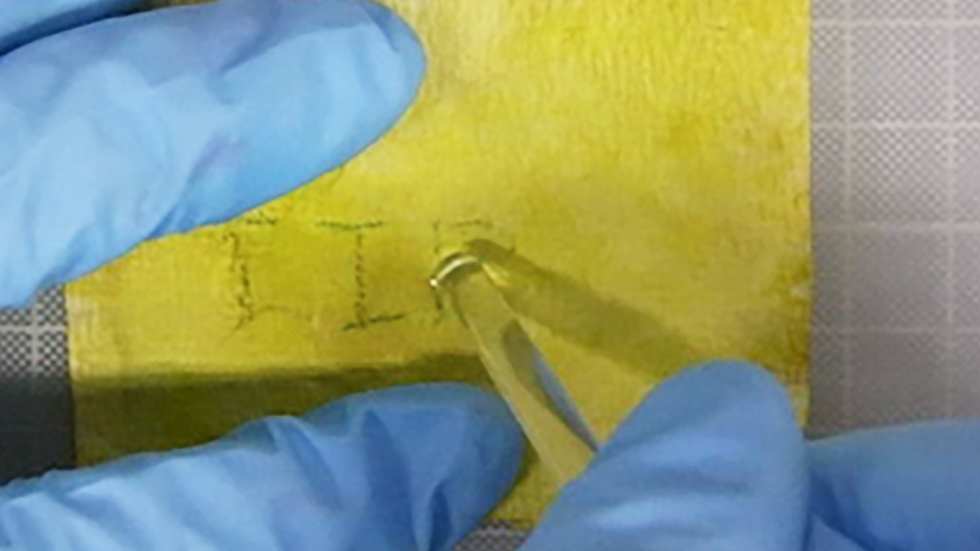
Chemistry
October 11, 2022
Research reveals quantitative and high-resolution pressure functions of pressure-sensitive material
Potential use in sensing technologies and material sanitization for COVID-19
Researchers from Nagoya University in central Japan have published a study in the Journal of Materials Chemistry on a pressure-sensitive material, known as fluorenylidene-acridane (FA). Their research has potential applications for technologies related to pressure sensing, recording, and display devices.
Mechanochromic materials change color in response to external stimuli, such as mechanical pressure. However, previous research on mechanochromism was limited to qualitative reports, such as whether the color changed. Until now, quantitative analysis was missing.
To quantitatively describe the color change, a research team led by Professor Yutaka Matsuo, at the Department of Chemical Systems Engineering, Graduate School of Engineering, Nagoya University, analyzed FA, one type of mechanochromic material. Conducting several tests on materials containing FA, they found that it changed color from yellow to dark green when touched. But, unlike other mechanochromic materials, instead of changing color by emitting light, it changed color by absorbing it. This makes it unique.
Previously, the mechanochromic behavior of FA was usually observed in power form. However, for their current study, the research team first fabricated a thin film of FA, which allowed them to implement the subsequent measurements. Next, to quantify color changes, researchers applied measurement techniques called diffuse reflectance ultraviolet-visible (UV-vis) spectroscopy. In addition, to indirectly measure the structural changes of FA, they used Kelvin force microscopy. Increasing mechanical pressure gradually changed the color from yellow to green. Additionally, the more pressure applied, the more the FA structure changed. These data clarified the quantitative relationship between the amount of mechanical pressure and the extent of color change of an FA-containing material. This is the first report of FA using quantitative data.
The researchers’ measurements also revealed that FA has a high spatial resolution. The FA film detected pressure applied over a width as small as 50 nanometers, making the spatial resolution 1000 times better than other commercially available pressure sensing films. Furthermore, when treated with ethanol, the film color turned back to yellow. This is important because to reverse the color change, previous studies had only used strong solvents, such as chloroform. But now widely available solutions such as alcohol can be used with this technology.
Quantitative measurement of FA opens many possibilities for technologies such as disc storage. “Optical disc devices, such as CDs and DVDs, use laser light to write data,” Professor Matsuo said. “We could utilize color changes after mechanical pressure to store information,” he continued.
Moreover, the measurement techniques for FA from this study may apply to other types of mechanochromic materials in addition to FA. This means that this study could also contribute to future research in pressure sensing technology.
Finally, color can tell us whether a material surface has been touched and whether it has been wiped with alcohol afterwards. This could have implications for keeping surface areas clean. It is now possible to imagine, for example, a future table changing color when touched and then wiped clean, a technology that would be valuable in a hospital or other environment seeking to prevent the transmission of viruses by contact with contaminated surfaces.
The study, "Quantitative and high-resolution mechanical pressure sensing functions of mechanochromic fluorenylidene-acridane," has been published in Journal of Materials Chemistry C at DOI: 10.1039/D2TC01988D.
Authors:
Keisuke Ogumi, Kohki Nagata, Yuki Takimoto, Kentaro Mishiba, and Yutaka Matsuo
Media Contact:
Reiko Matsushita
International Communications Office, Nagoya University
Email: kouho-en@adm.nagoya-u.ac.jp